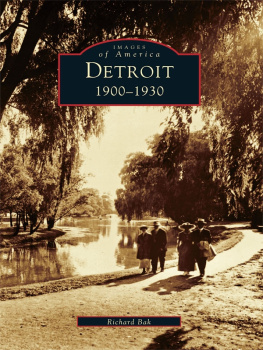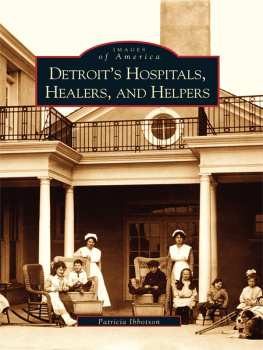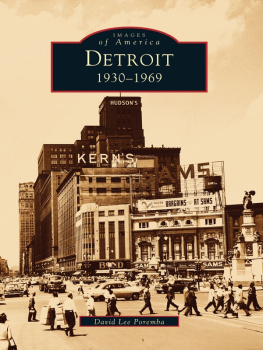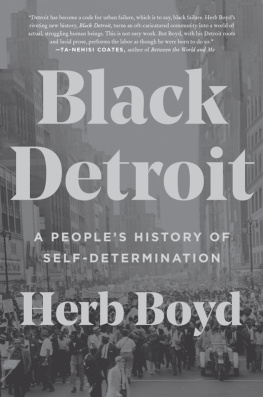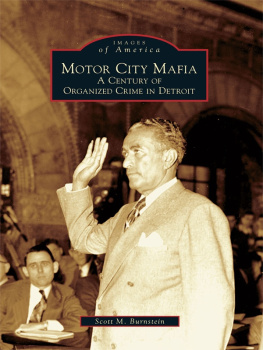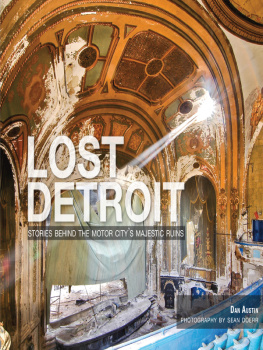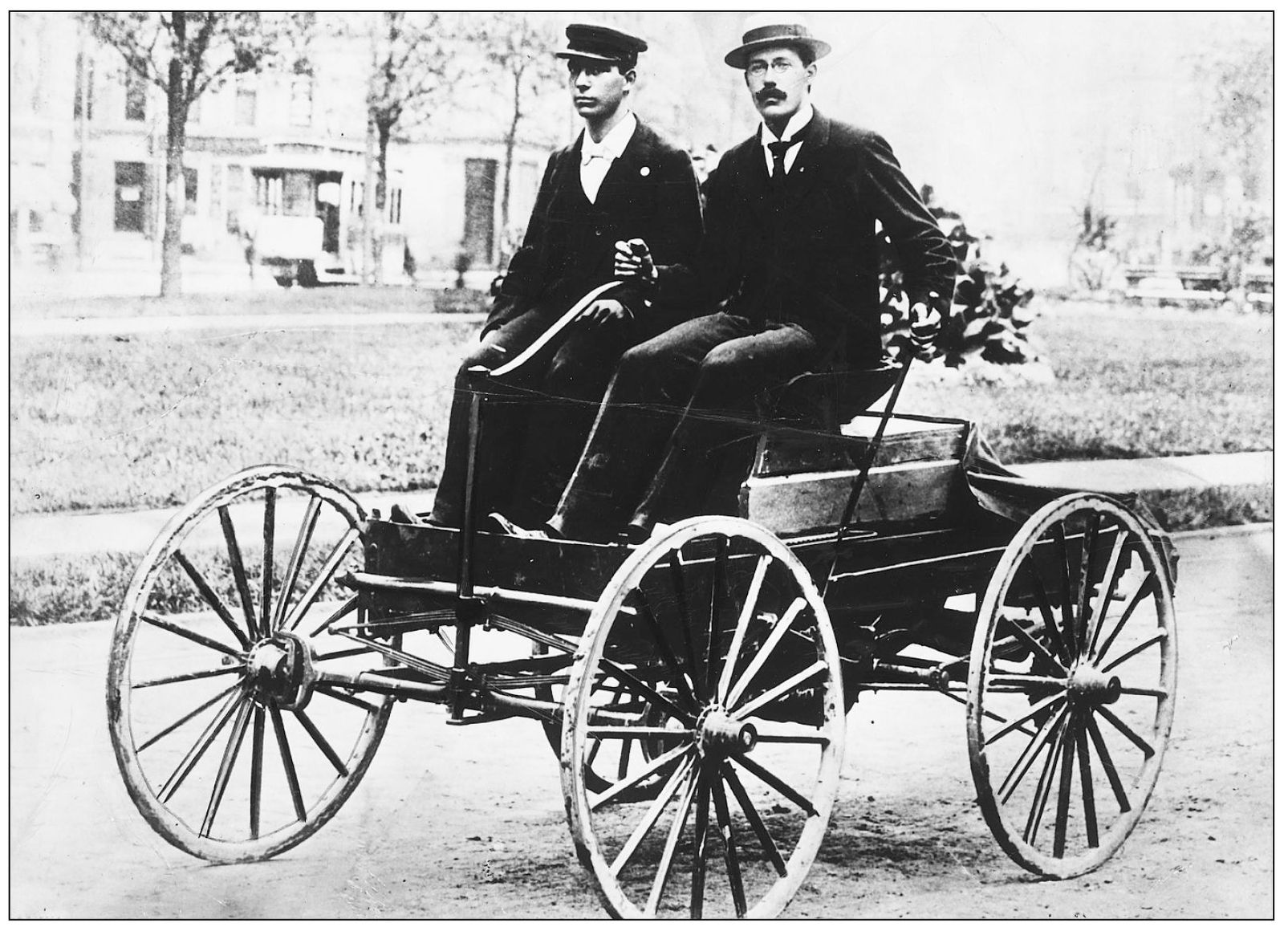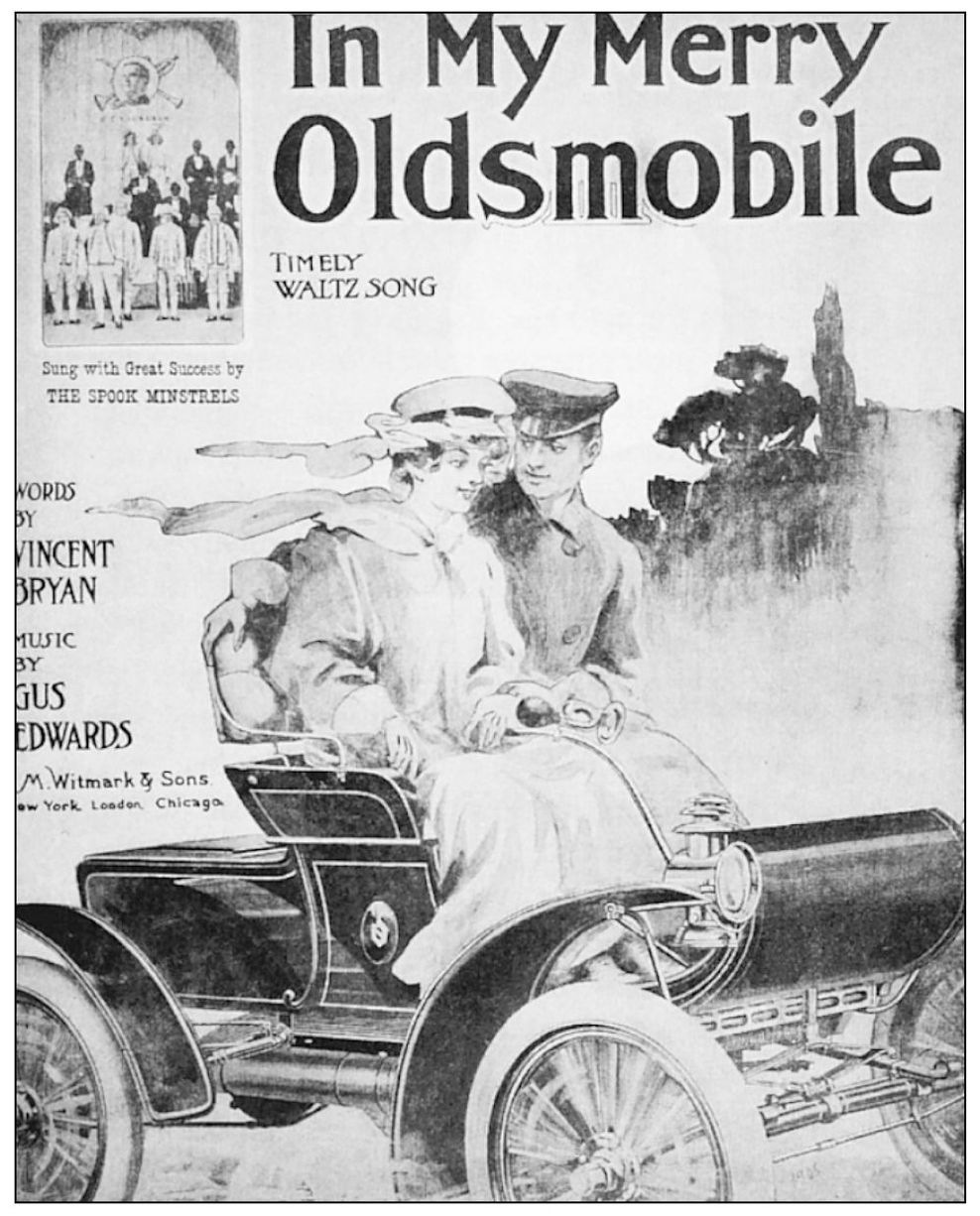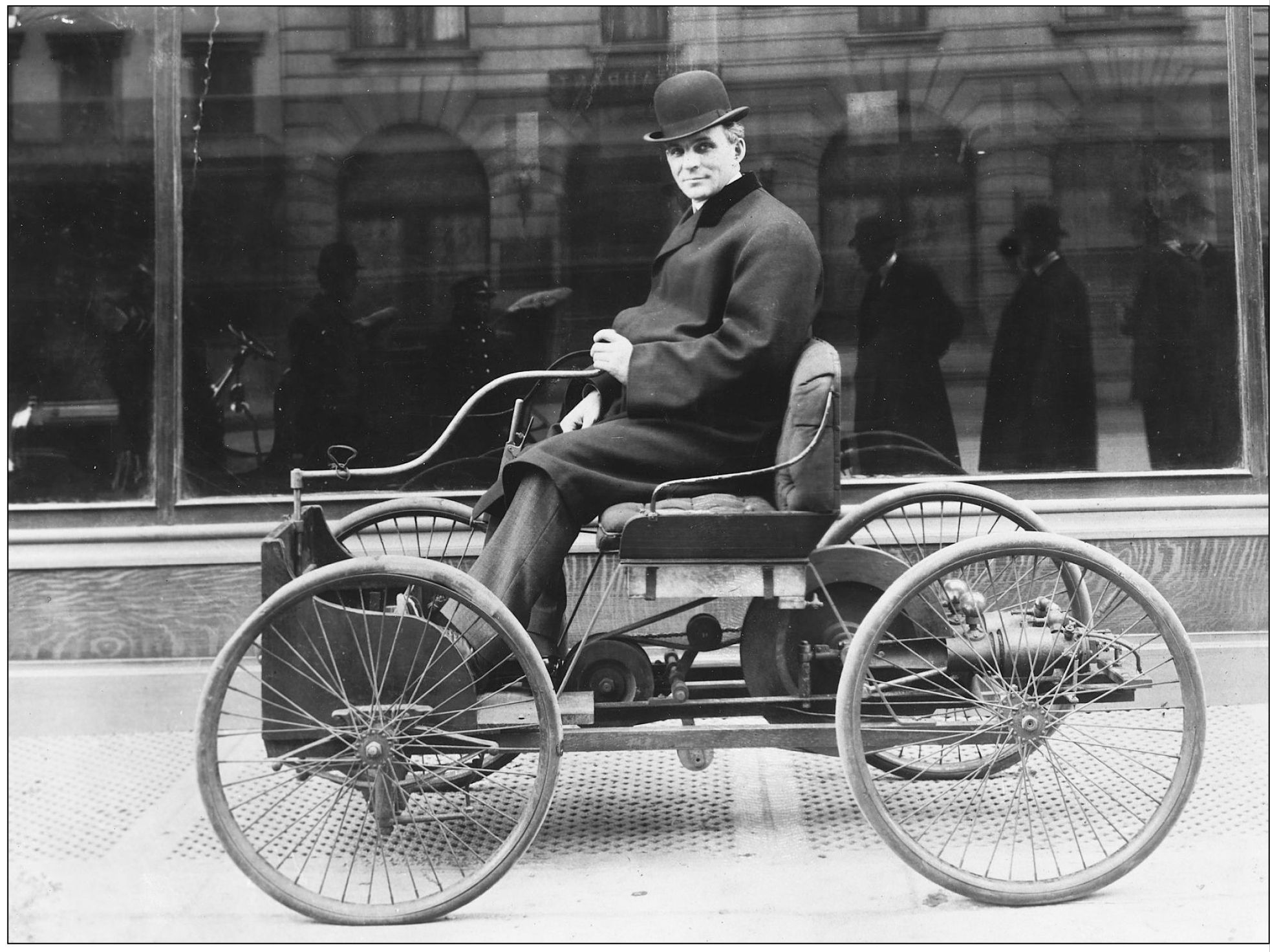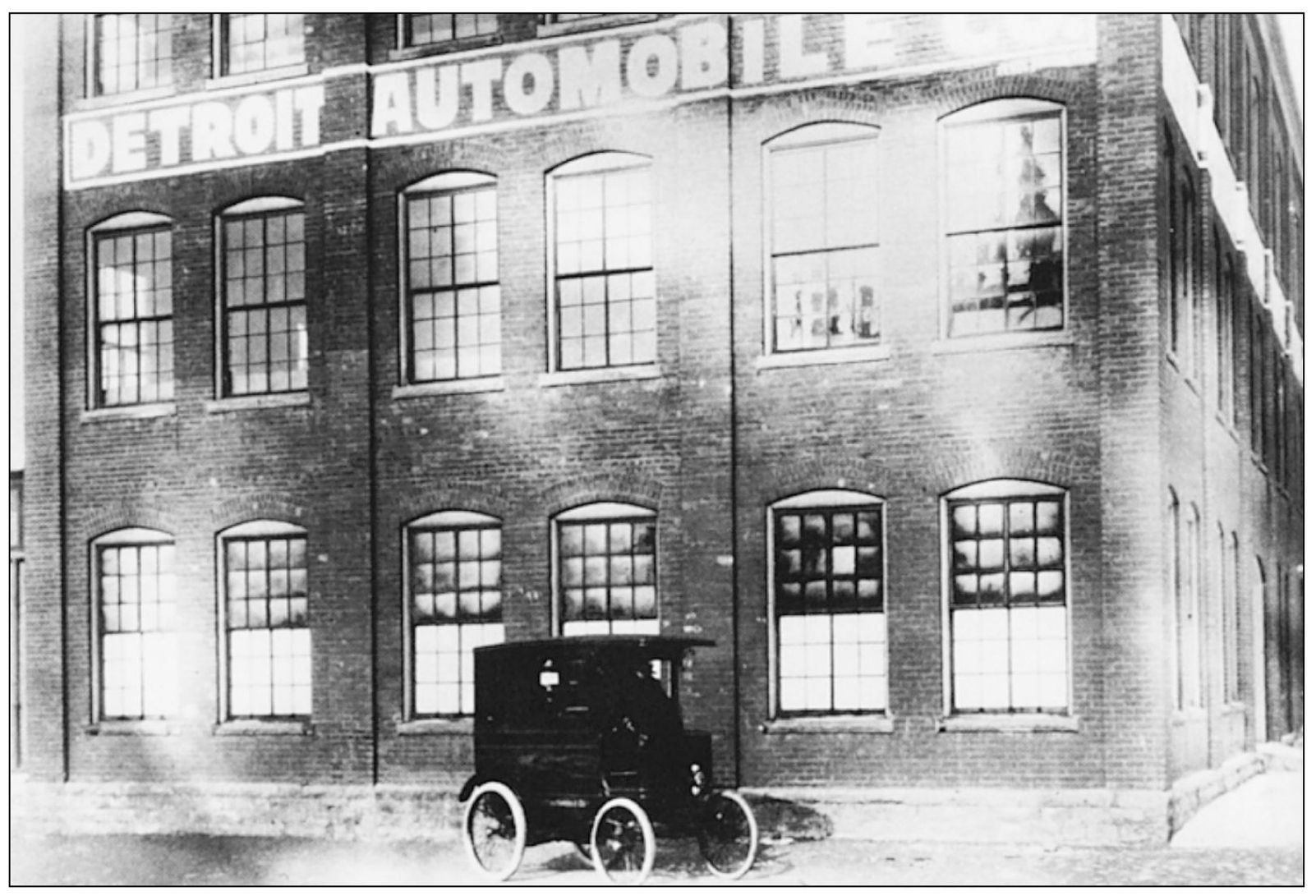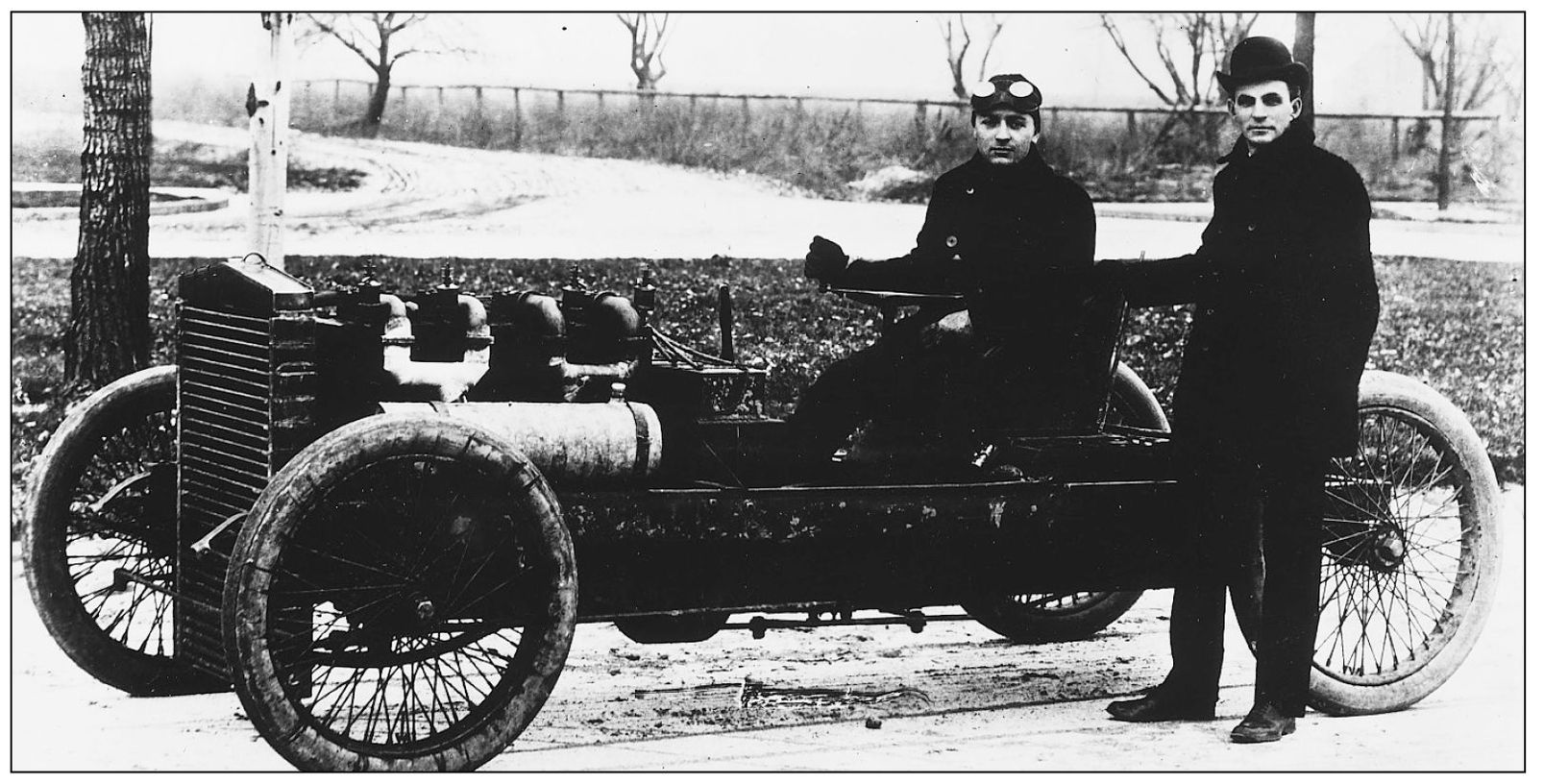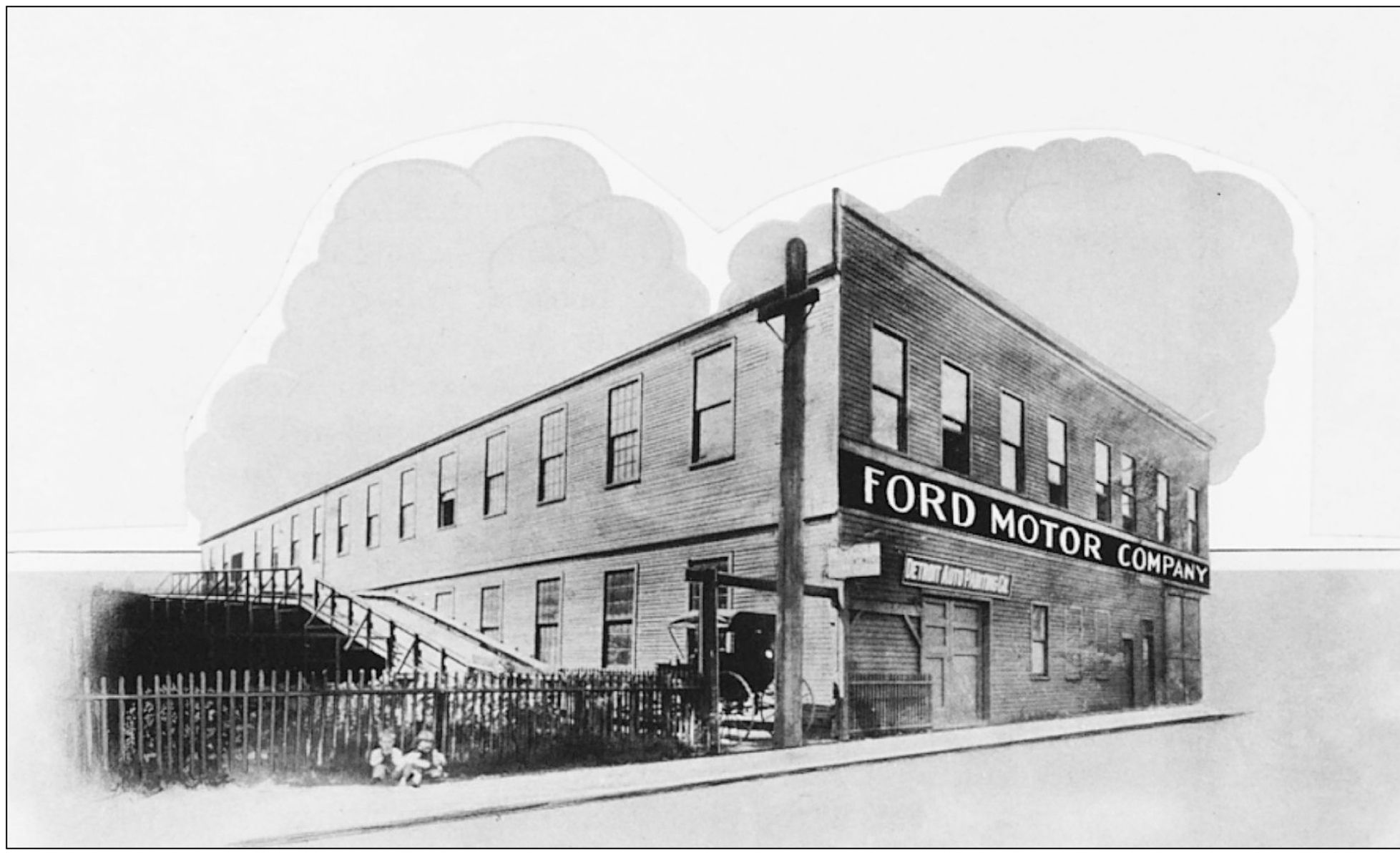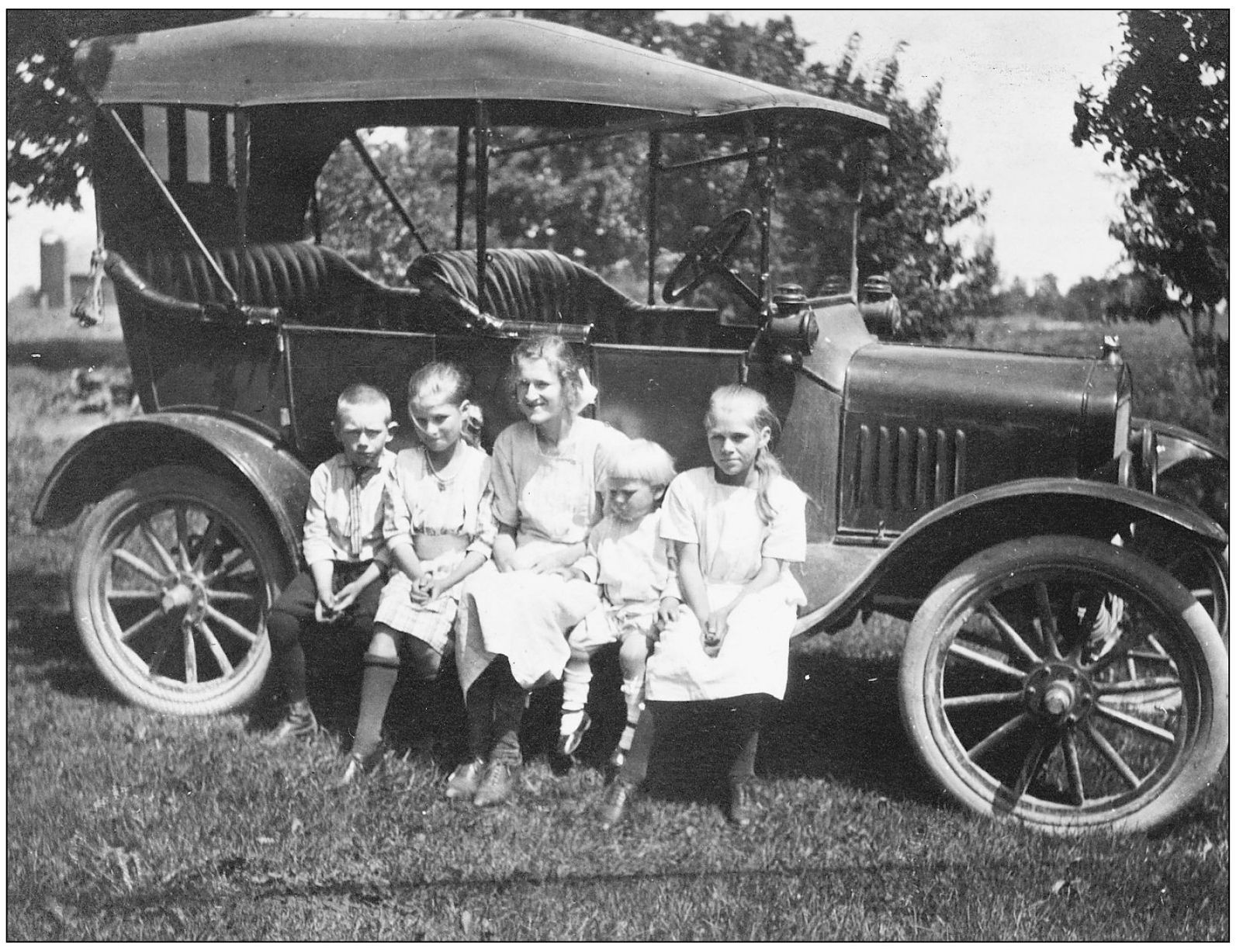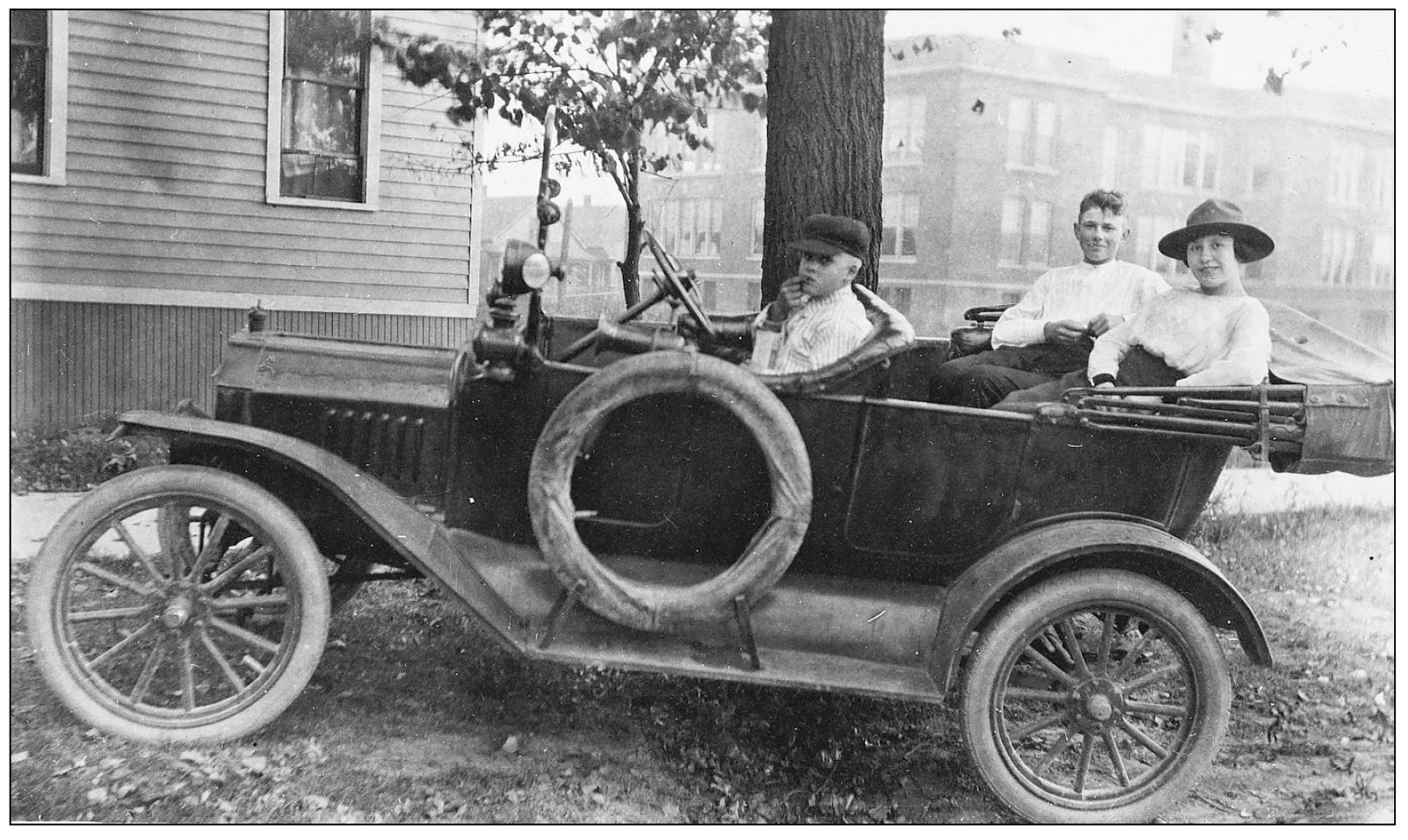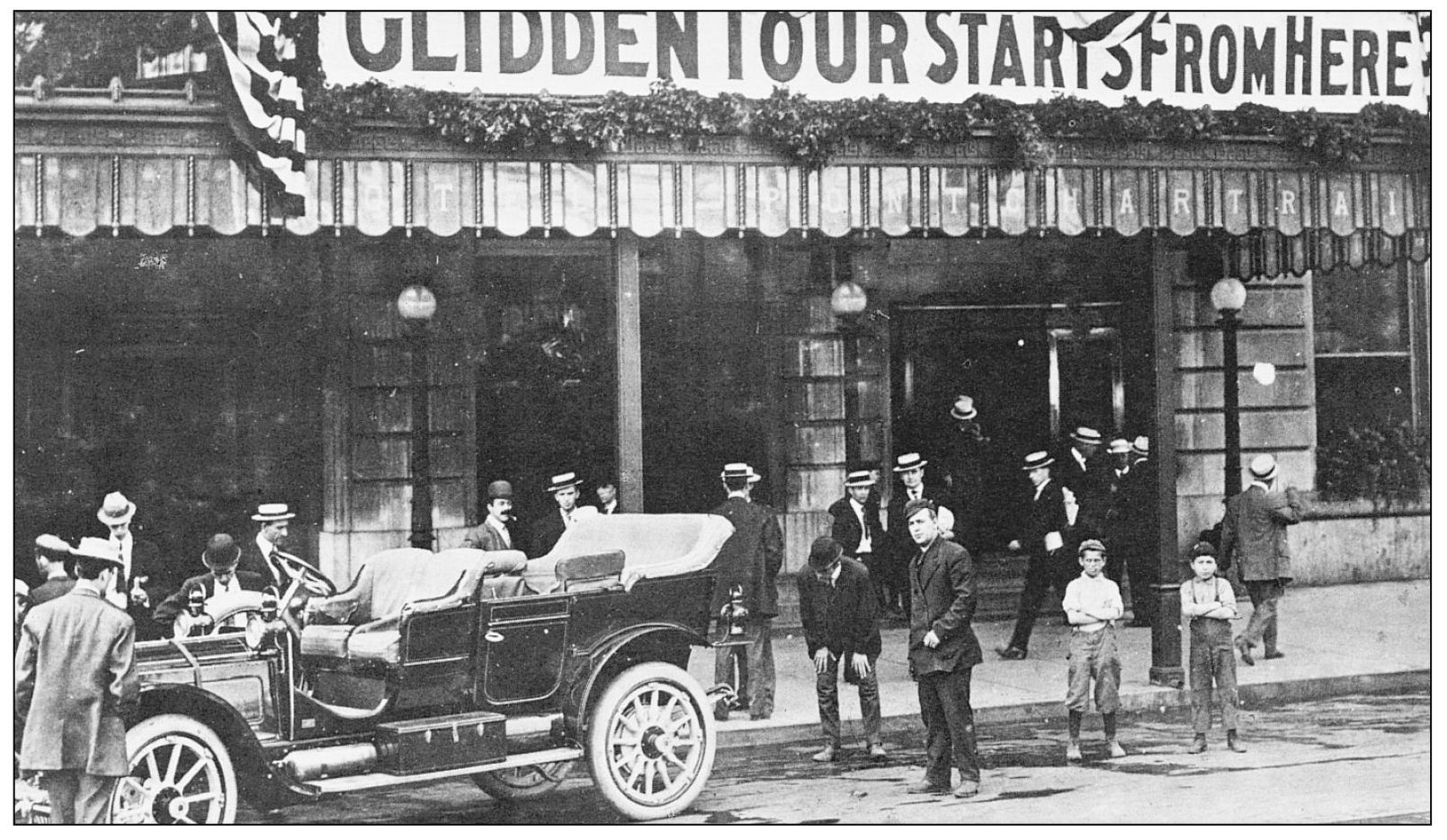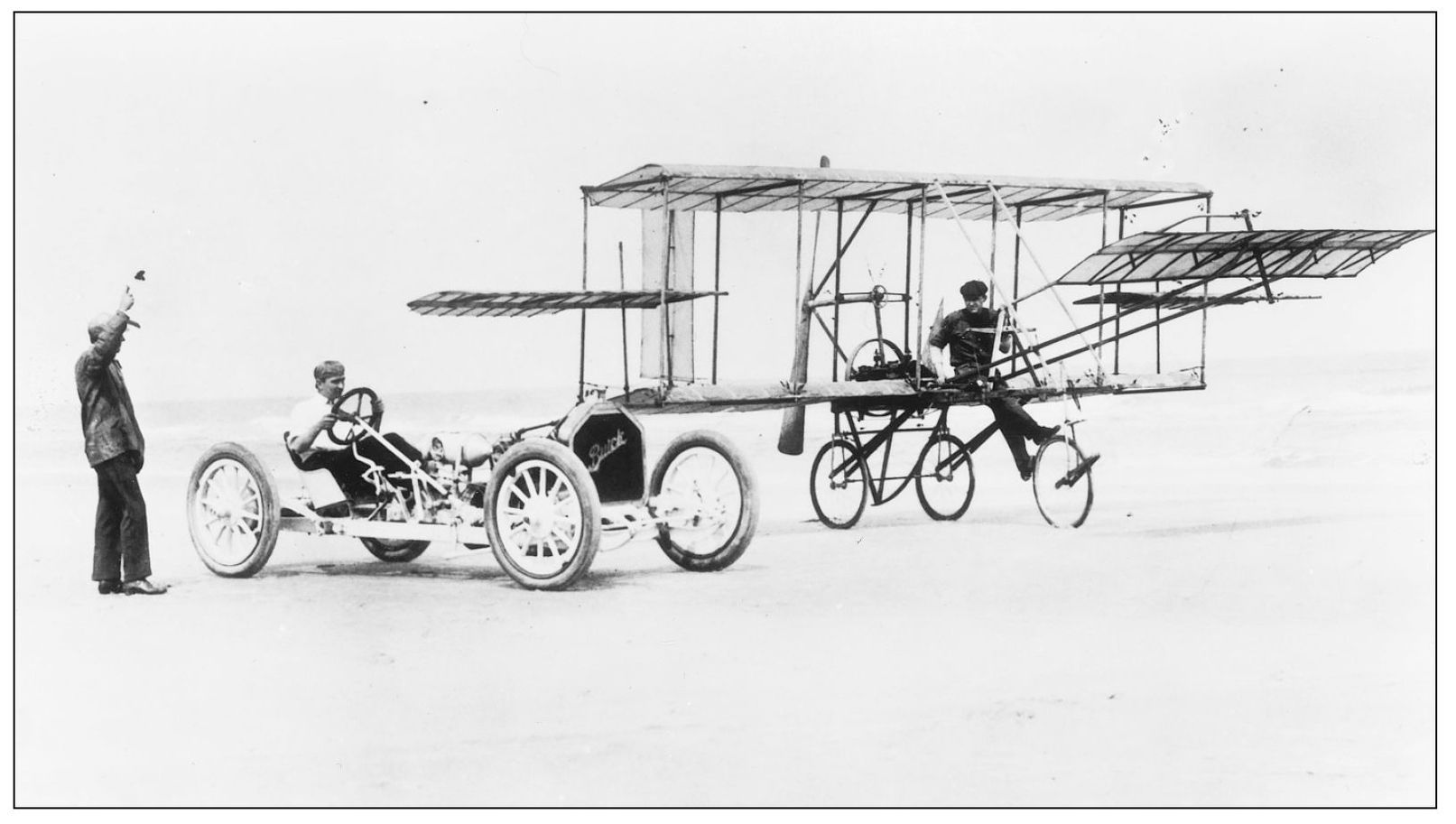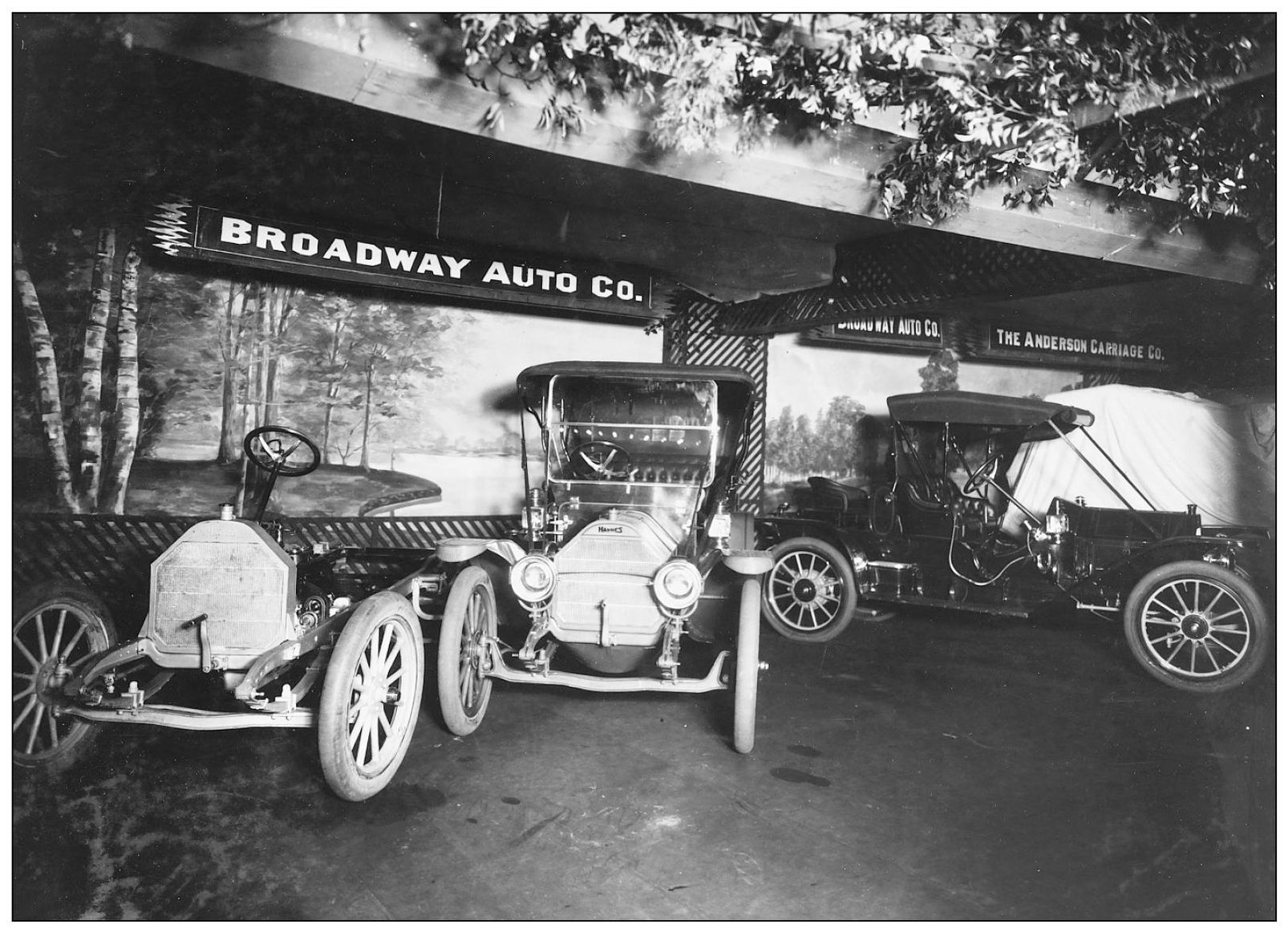One
PUTTING THE WORLD ON WHEELS
DAWN OF DETROITS AUTO AGE. Detroit can be said to have entered the 20th century a few years earlier than the rest of the country. On March 6, 1896, a 28-year-old mechanical engineer named Charles Brady King drove his four-cylinder horseless carriage down Detroits streets. It was the first automobile ride in a city that would soon become famous for putting the world on wheels. This photograph shows King at the tiller alongside his associate, Oliver E. Bartel. Although King never became the household word that other auto pioneers did, he led a long, full, and noteworthy life. In addition to his many patents and inventions (in 1907, he designed the first model with the steering wheel on the left side), he was a practicing architect and an accomplished musician and artist.
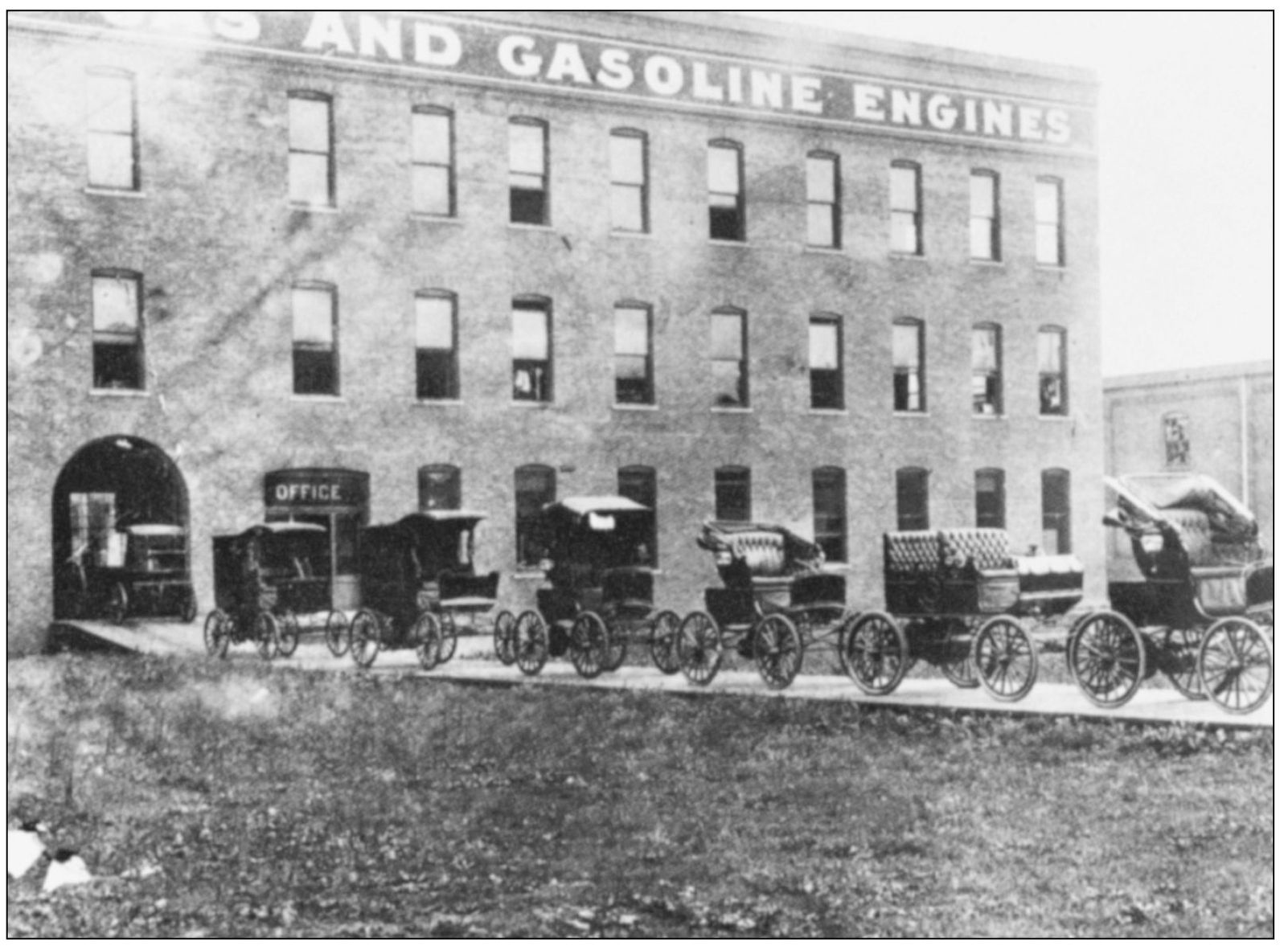
DETROITS FIRST AUTO PLANT. In 1899, Ransom E. Olds built a three-story structure on Jefferson Avenue, near the Belle Isle bridge, to manufacture his gasoline-powered Oldsmobile. His was the first factory of its kind in the city. Olds offered his cars at a price of $1,250, but sales were disappointing until he gambled on producing a cheaper onecylinder runabout for $650. A fire on March 9, 1901, destroyed the Olds plant, but an employee managed to push the prototype to safety. Olds relocated to Lansing, where his curved-dash runabout became the countrys first high-volume model and inspired a popular song, In My Merry Oldsmobile.
HENRY FORD AND HIS QUADRICYCLE. Henry Ford was the 33-year-old night-shift engineer at the Edison Illuminating Company when he test-drove his quadricycle on Detroits streets on the rainy morning of June 4, 1896. The darn thing ran! exclaimed Ford, who never imagined the social and technological revolution that would follow.
A FUTILE FIRST TRY. In 1899, Henry Ford and several investors, including Mayor William Maybury, organized the Detroit Automobile Company. By early 1900, a prototype (pictured here) was ready, but Ford quickly grew tired of his partners interference and, by the end of the year, quit. The company folded, having never put a car into production.
THE RACE TO BE BEST. Henry Ford stands beside his famous racer, the four-cylinder, 80-horsepower 999, with fellow automotive pioneer Barney Oldfield at the tiller. Although Ford was skeptical about the engineering and mechanical merits of racing, he realized its public relations value in terms of attracting customers and investors. Both he and Oldfield drove the racer to world speed records. On January 1, 1904, on the ice of Lake St. Clair, Ford set a record by covering a mile in 36 seconds, which worked out to a speed of 91.4 miles per hour. (Collection of the Henry Ford Museum.)
FIRST HOME OF THE FORD MOTOR COMPANY. By 1903, the country was experiencing a rash of automotive wildcatting, with 57 firms starting up and another 27 failing that year. One of the success stories was the Ford Motor Company, which was principally capitalized by local coal merchant Alexander Malcomson. A two-story brick structure was built on Mack Avenue, where workmen were paid $1.50 per day to build a two-cylinder model capable of reaching speeds of 30 miles per hour. It retailed for $850. Two years later, the growing company expanded operations to a larger factory on Piquette Avenue at Beaubien. There, beginning on October 1, 1908, the first of Fords fabled Model Ts were built. (Collection of the Henry Ford Museum.)
TWO TIN LIZZIES. Pictured on this page are two of the staggering 15 million Model T Fords manufactured between 1908 and May 1927, when production was finally stopped. The Model Ts unsophisticated styling and utilitarian image made it the butt of countless jokes and cartoons; the Tin Lizzy was also sturdy, practical, and inexpensive, traits that endeared it to the first generation of car-buying Americans.
THE UNIVERSAL CAR. The 1915 Model T Town Car is shown here, in front of the Michigan Central Railroad Depot. The Model T was offered in nine body styles, all built on the same chassis, but it wasnt until the early 1920s that buyers could order the car in anything but basic black (not that most Ford customers were concerned with superficial facelifts). A big part of the reason for the cars success was the nationwide dealer and service system Henry Ford established. It was a boon to travelers and rural customers.
MOTORING GIMMICKS. Racing competitions were important in promoting interest in the industry as well as for testing new equipment. The Glidden Tour, held annually from 1905 to 1911, was a long, cross-country race over bad roads that started in front of the Pontchartrain Hotel in downtown Detroit and ended in a Western city. Some manufacturers promoted speed over endurance, as the bottom picture of Buicks Wild Bob Burnham racing an airplane at a 1910 Speed Festival illustrates.

